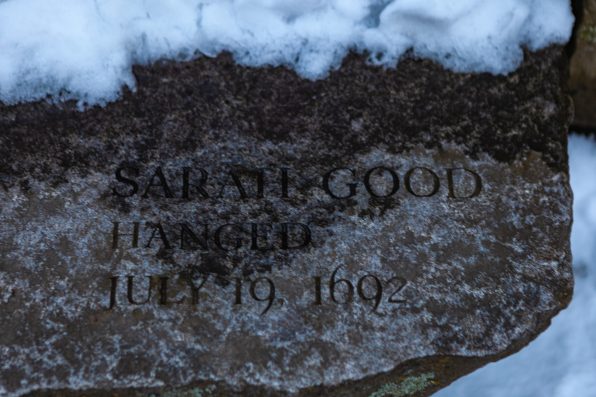The Trial of Sarah Good, The Third Person To Be Executed During The Salem Witch Trials Of 1692

During the Salem Witch Trials of 1692, hundreds of women were wrongly accused of witchcraft. Among one of them was Sarah Good, who became the third victim to be executed. She died at the age of 39. So, how exactly did Sarah Good wind up at the stand?
Sarah was married to William Good, who was a day laborer. The couple struggled to make ends meet, forcing Sarah to go door to door and beg for handouts while her husband worked. Many people looked down on them for their low economic status.
Before the witchcraft hysteria even began, Sarah and her husband were not well-liked around town because they constantly got into disagreements with neighbors and other residents. All of this combined made Sarah a prime target for accusations of witchcraft.
In February 1692, Sarah was officially accused of witchcraft after two girls, Abigail Williams and Betty Paris, started behaving strangely.
The girls would have fits, their bodies convulsing involuntarily. When asked who was tormenting them with these fits, they named three women: Sarah Good, Tituba, and Sarah Osborn.
They were arrested and appeared before the court in March of 1692. At first, Sarah Good and Sarah Osborn denied all accusations, but then Tituba, a servant owned by Reverend Samuel Parris, confessed that they had all met with the devil.
She blamed Sarah Good and Sarah Osborn for forcing her to hurt the children, claiming that if she didn’t do their bidding, they would hurt her instead.
The accusers were also brought in to testify. During Sarah’s trial, the girls would rock back and forth and throw themselves into fits. This was taken as proof that Sarah was operating under the influence of the devil.
One of the girls was even caught in a lie while making her accusations. She claimed that Sarah had attacked her with a knife and that a piece of the blade had broken off when Sarah tried to stab her. The girl produced the broken piece to back up her statement.

Deyan – stock.adobe.com – illustrative purposes only
However, a young man stood up and said that the piece had broken off of his own knife. He pulled out the remaining part of the knife to show the court.
It was clear that the girl had been fabricating her story, but she was only let off with a warning, and the case continued.
In the end, Sarah was charged with multiple counts of witchcraft and sentenced to death. When Sarah was given the opportunity to defend herself, the judges pressed her to confess to her sins.
She maintained that she was innocent, proclaiming that Tituba and Sarah Osborn were the real witches.
Among the panel of judges was Reverend Nicholas Noyes. When her guilty verdict was announced, Sarah declared, “I am no more a witch than you are a wizard, and if you take away my life, God will give you blood to drink!”
Over two decades years later, her words rang true as Reverend Noyes died choking on his own blood due to an internal hemorrhage.
Since Sarah was pregnant at the time of her arrest, her execution date was pushed back until her child was born. She gave birth in her jail cell, but the infant died shortly after.
On July 19, 1692, brought Sarah to the execution site at Proctor’s Ledge, along with four other women. They were hanged and buried at the location where they died.
In 1710, William Good sued the court for health and mental damages as a result of the trial. He received thirty pounds sterling, which was one of the largest sums of money ever given to the family members of convicted witches.
Sign up for Chip Chick’s newsletter and get stories like this delivered to your inbox.
More About:Freaky





